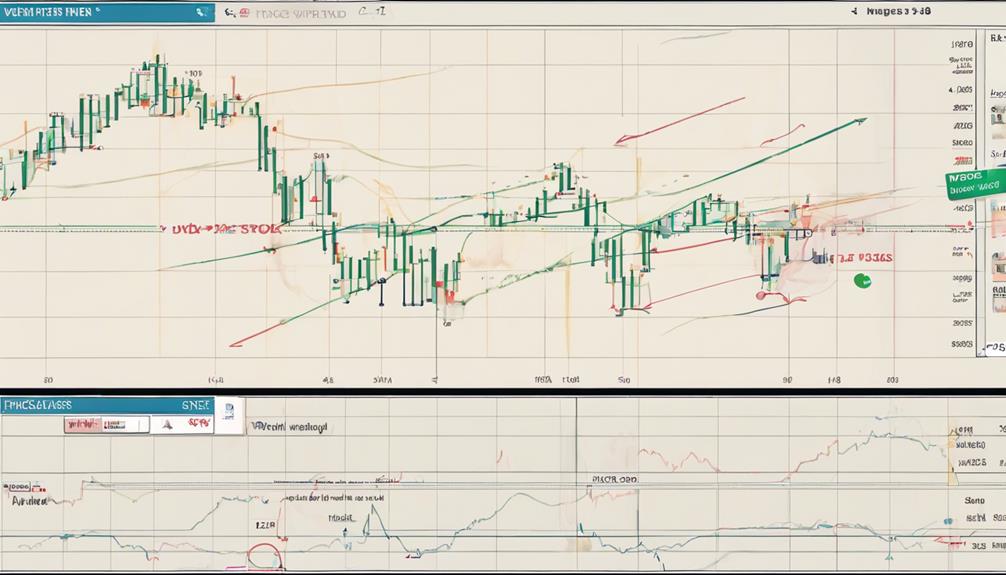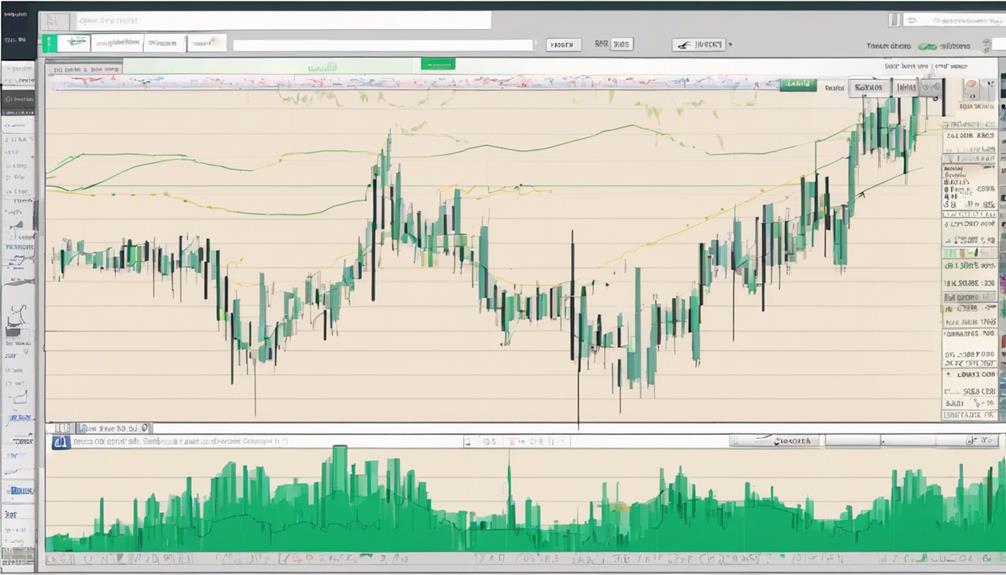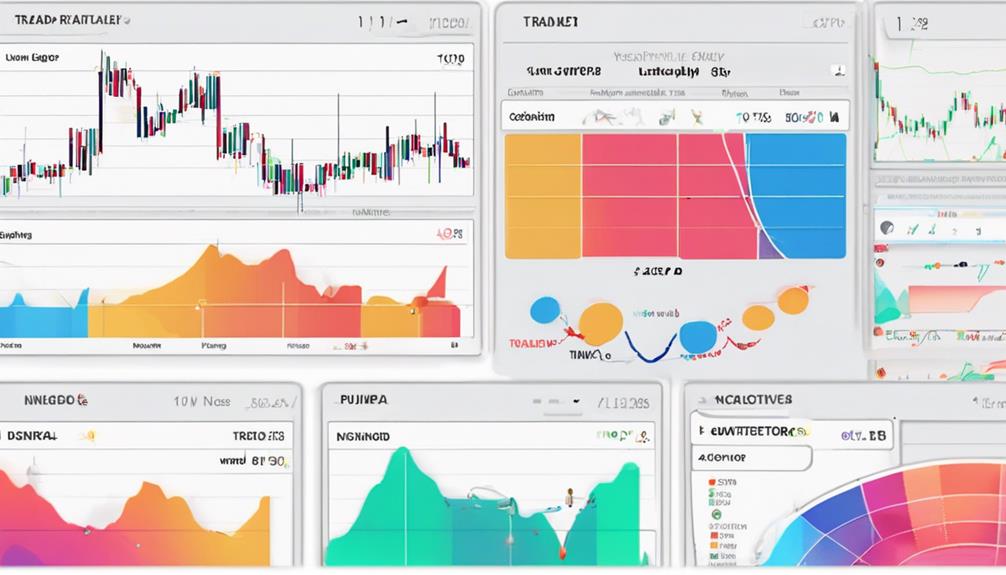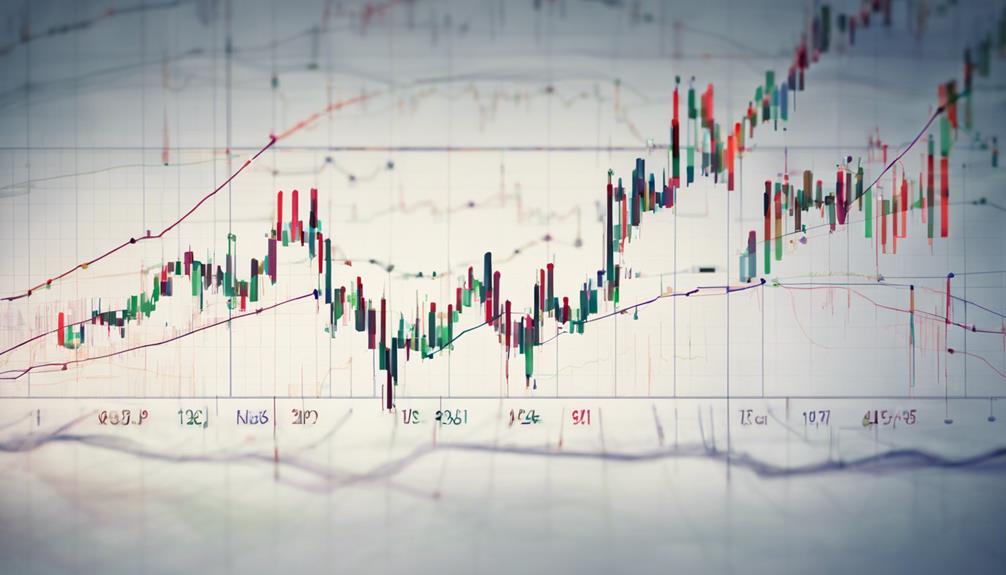You may be surprised to learn that over 80% of professional traders incorporate trend-following indicators into their trading strategies.
But why are these indicators so widely used? Well, imagine being able to spot potential market trends before they even fully develop, or having a tool that can help you determine the best time to enter or exit a trade.
Trend-following indicators offer this and much more, providing a crucial edge in the volatile world of trading. So, if you're looking to enhance your trading skills and stay ahead of the curve, understanding the significance of these indicators is essential.
Benefits of Trend Following Indicators
Trend following indicators offer traders clear and objective insights into established market trends, aiding in informed decision-making and enhancing profitability. By analyzing price movements, indicators such as moving averages help traders determine the direction and strength of a trend.
These technical tools generate buy and sell signals based on market trends, enabling traders to make rational decisions without being swayed by emotions. Utilizing trend following indicators allows traders to capture profits during trending markets efficiently.
The ability to objectively measure trend strength and direction empowers traders to strategically navigate the market landscape, highlighting the importance of incorporating these tools into your trading arsenal for improved outcomes.
Identifying Trend Reversals

Identifying potential trend reversals in the market involves keen observation of key indicators like moving averages, MACD crossovers, and RSI divergences. When the price action crosses important moving average levels, it may signal a shift in the trend.
Additionally, a MACD crossover from positive to negative can suggest changing market sentiment and a possible trend reversal. RSI diverging from price movements is also a crucial indicator of a potential trend reversal.
To increase the accuracy of predictions, it's beneficial to combine these indicators for trend confirmation. By paying attention to these trend reversal signals, you can better adapt your trend-following strategies to the evolving market conditions.
Managing Risk With Indicators

Utilizing trend following indicators in risk management provides traders with crucial signals for entry and exit points based on price trends. When managing risk with these indicators, consider the following:
- Set stop-loss levels using trend following indicators to limit potential losses in volatile markets.
- Establish risk-reward ratios for each trade to maintain a disciplined approach and optimize profitability.
- Utilize objective criteria provided by trend following indicators to determine trend strength, reducing emotional decision-making and ensuring consistent profitability.
Popular Trend Following Indicators

Incorporating popular trend following indicators in your trading strategy can provide valuable insights into market trends and potential entry or exit points. Trend-following indicators such as Moving Average Convergence Divergence (MACD), Average Directional Index (ADX), Parabolic Stop and Reverse (Parabolic SAR), and Relative Strength Index (RSI) are widely used for capturing and confirming trends in the market.
MACD utilizes exponential moving averages to signal trend changes, while ADX measures trend strength, with readings above 25 indicating a robust trend. Parabolic SAR identifies entry points based on price direction, using dots above or below the price, and RSI compares recent up-moves to down-moves, signaling potential market reversals.
These indicators play a crucial role in helping traders navigate market trends and make informed decisions.
Implementing Indicators in Trading

To effectively apply trend-following indicators in your trading strategy, understanding how to interpret their signals and integrate them cohesively is essential. Here are some key steps to consider:
- Combine Multiple Indicators: Utilize a mix of moving averages, MACD, ADX, Parabolic SAR, and RSI to analyze trends, entry and exit points, and potential reversals.
- Assess Trend Strength: Evaluate the strength of a trend using indicators like ADX to determine the viability of trade signals.
- Adapt to Different Trading Styles: Customize indicator settings to align with your preferred trading style and timeframe for optimal results.
What Are the Benefits of Using Trend Following Indicators in Trading?
When it comes to trading, understanding the basic trend indicators significance is crucial. Utilizing trend-following indicators can help traders identify market trends and make informed decisions. These indicators provide valuable insights into potential price movements, enabling traders to capitalize on profitable opportunities and minimize risk.
Frequently Asked Questions
What Is the Purpose of Trend Indicators?
Trend indicators help you identify market trends and their strength objectively. They filter out noise, focus on significant price movements, and assist in aligning your trading strategies with prevailing trends for higher probability trades.
What Are the Benefits of Trend Following?
When you follow trends, you ride market momentum for profit. This approach reduces emotional decisions and offers clear entry/exit signals based on price action. Historically resilient, trend following suits various assets, making it versatile for traders.
What Is a Trend Following Indicator?
A trend following indicator is a technical tool that assists in identifying and following the prevailing market direction. It analyzes price movements to determine trends, helping you align your positions with market momentum for informed trading decisions.
What Is a Simple Trend Following Strategy?
When trading with a simple trend following strategy, you ride the market wave like a skilled surfer, buying above the moving average and selling below it. It's a systematic way to trade based on price action.
Conclusion
In conclusion, incorporating trend-following indicators in your trading strategy is like having a compass in a stormy sea. These indicators provide crucial insights into market trends, helping you make informed decisions and navigate volatile conditions with confidence.
By utilizing Moving Averages, MACD, ADX, Parabolic SAR, and RSI, you can effectively analyze trends, spot potential reversals, and manage risk. So, don't sail blindly – equip yourself with these indicators to steer your trading journey towards success.
